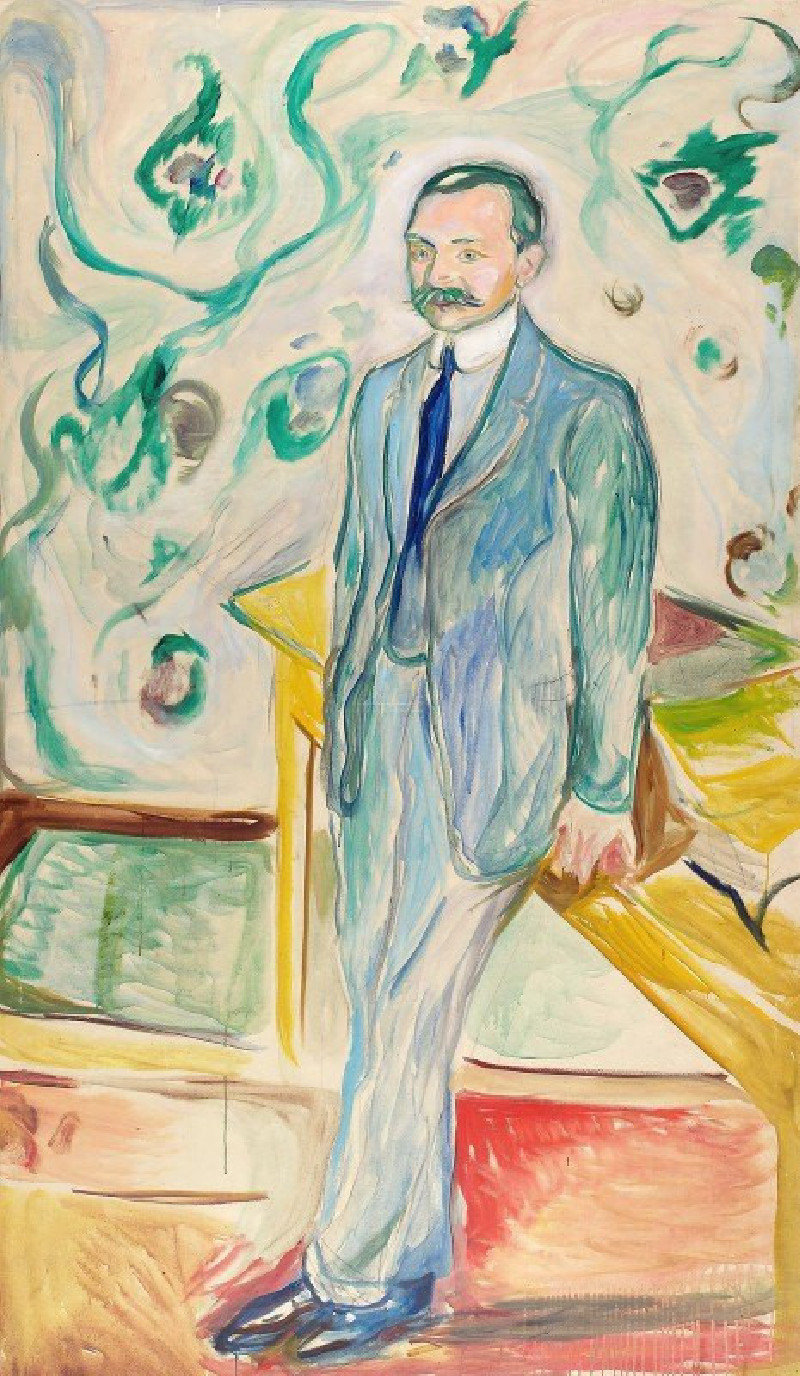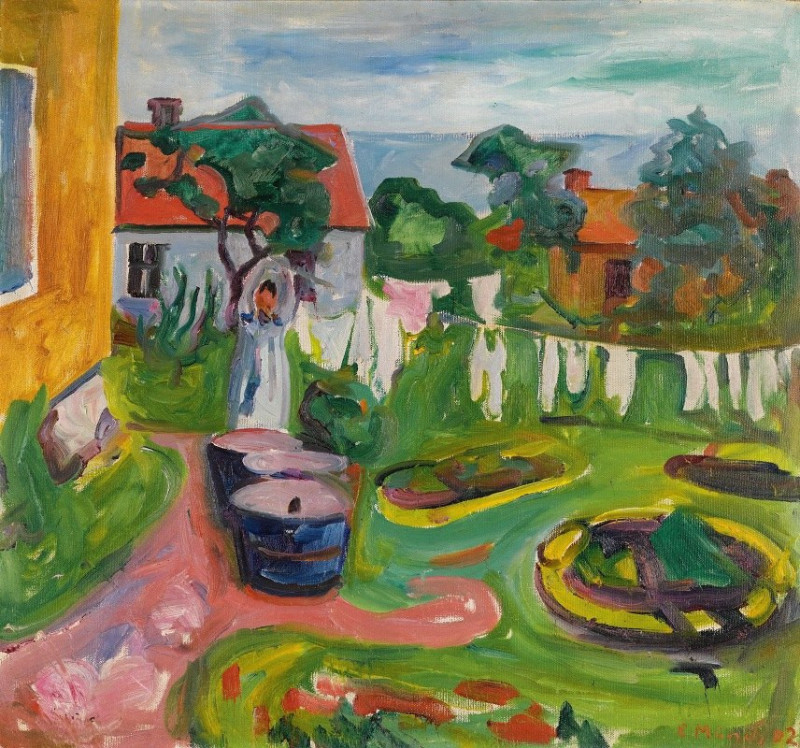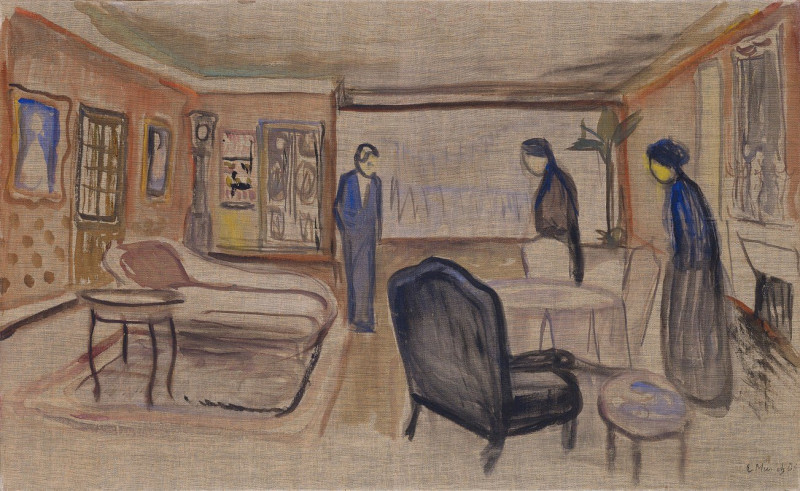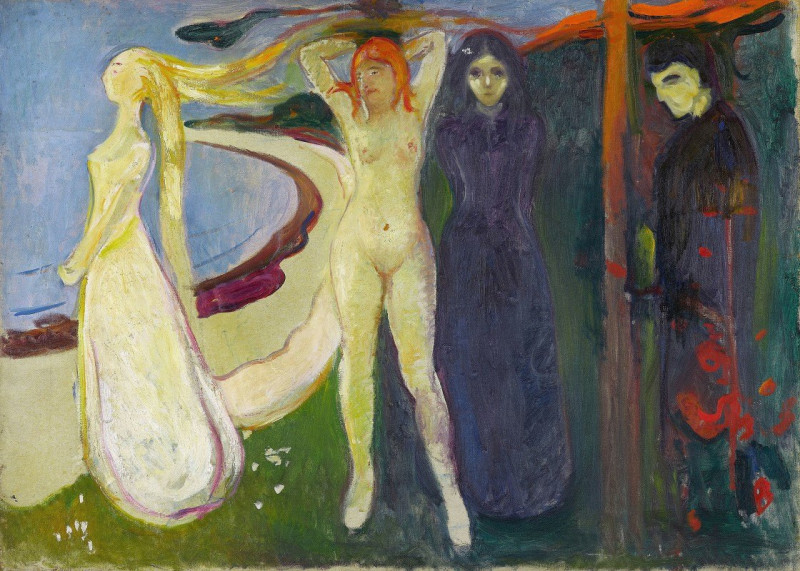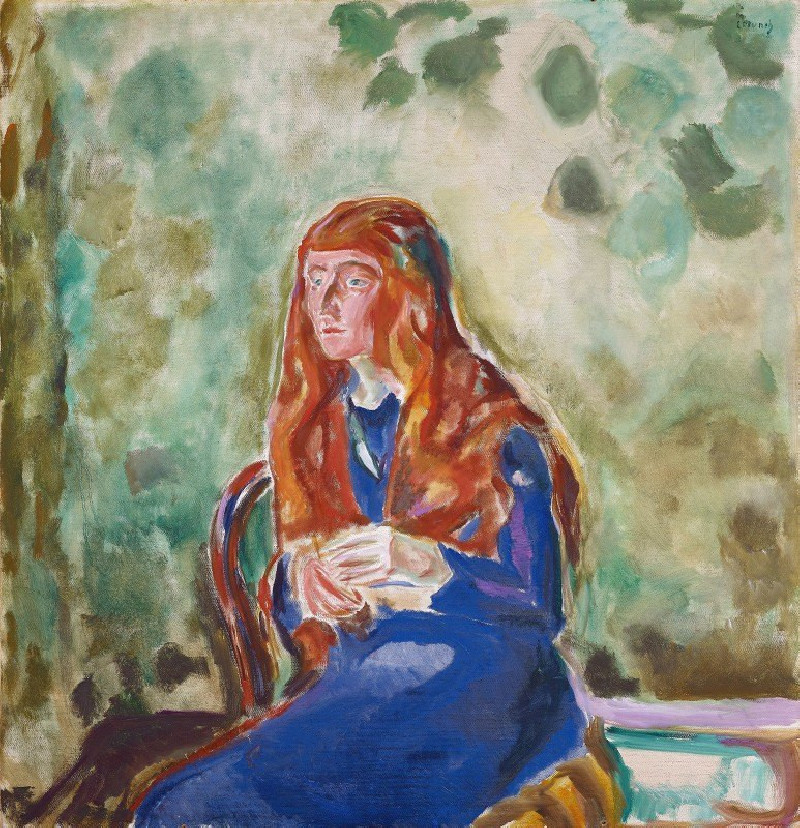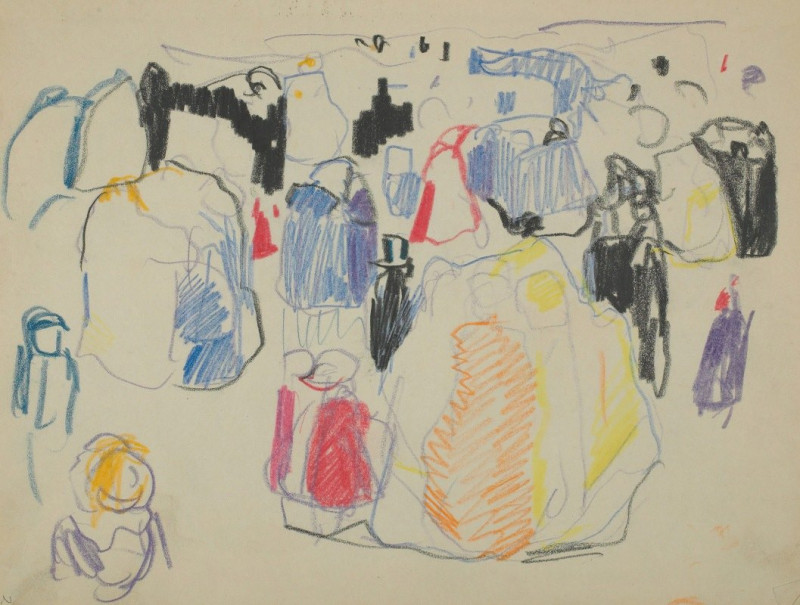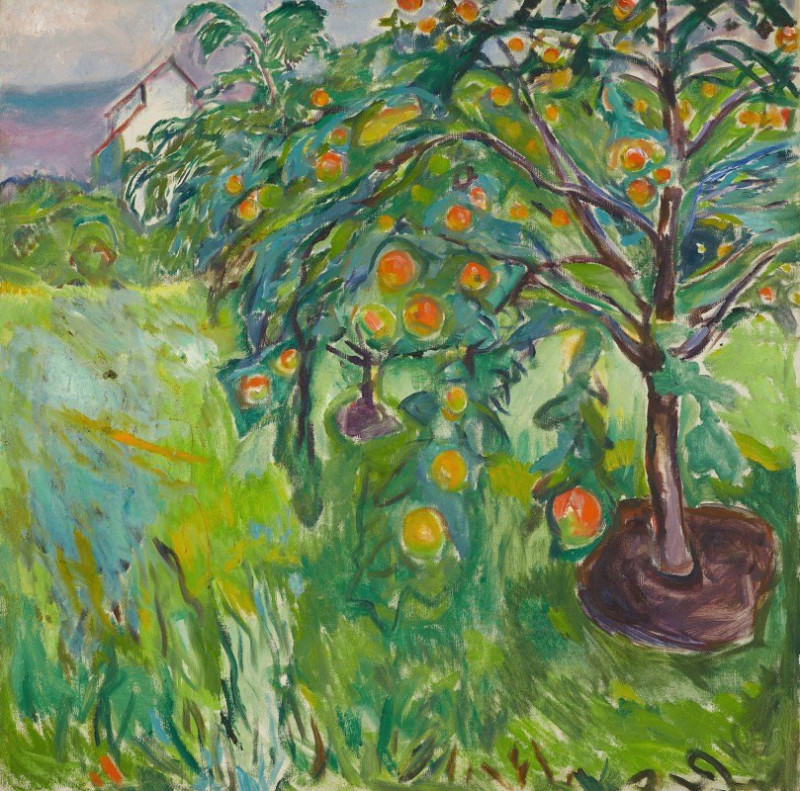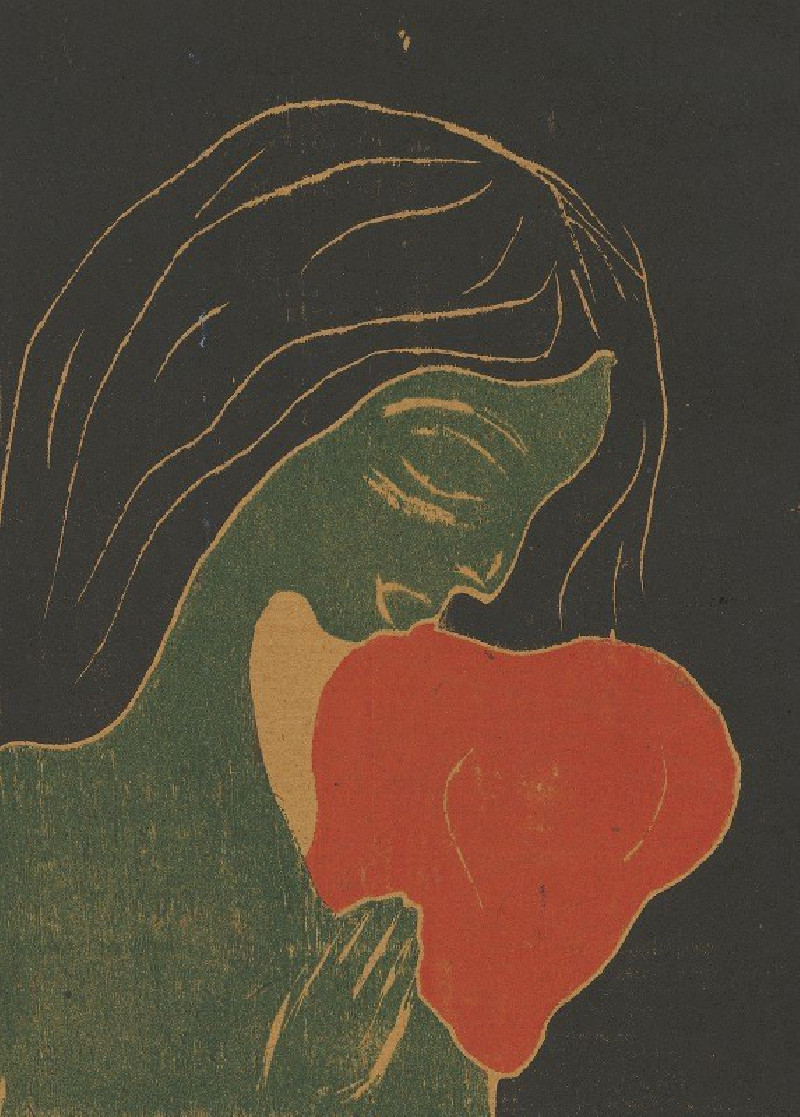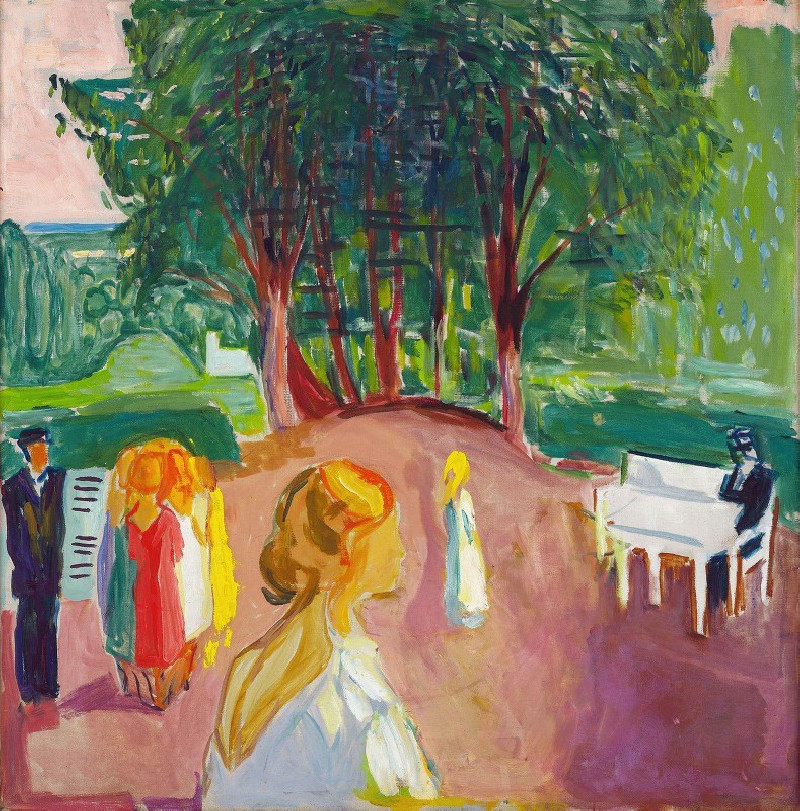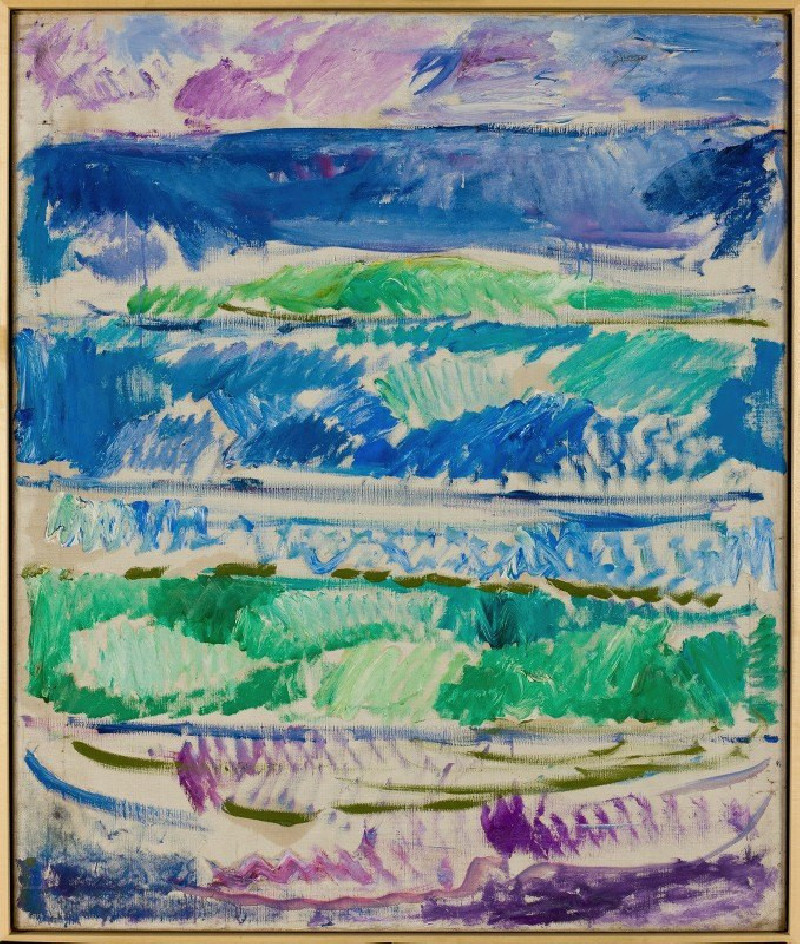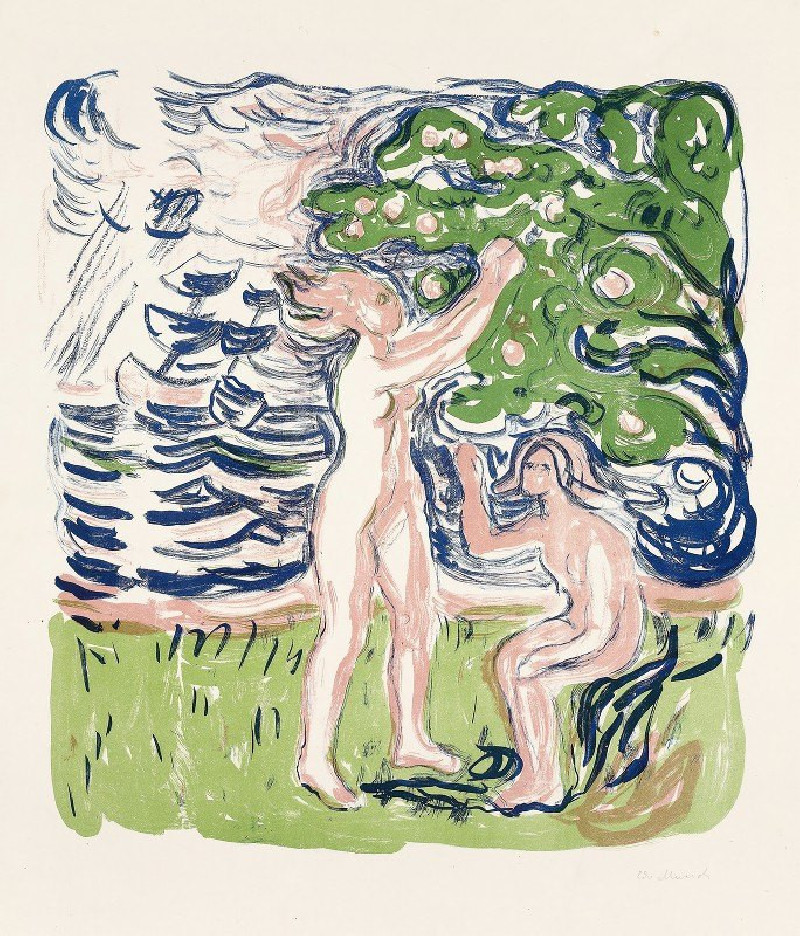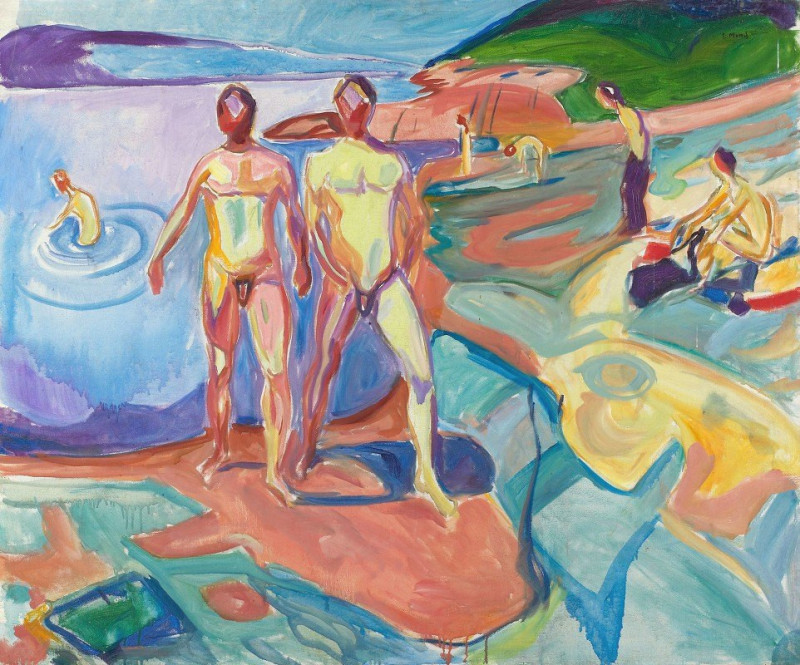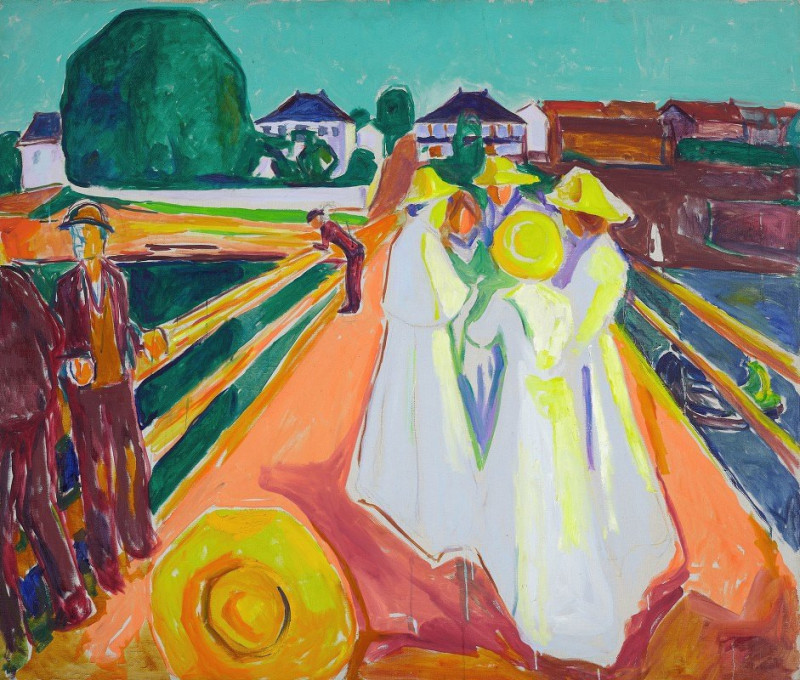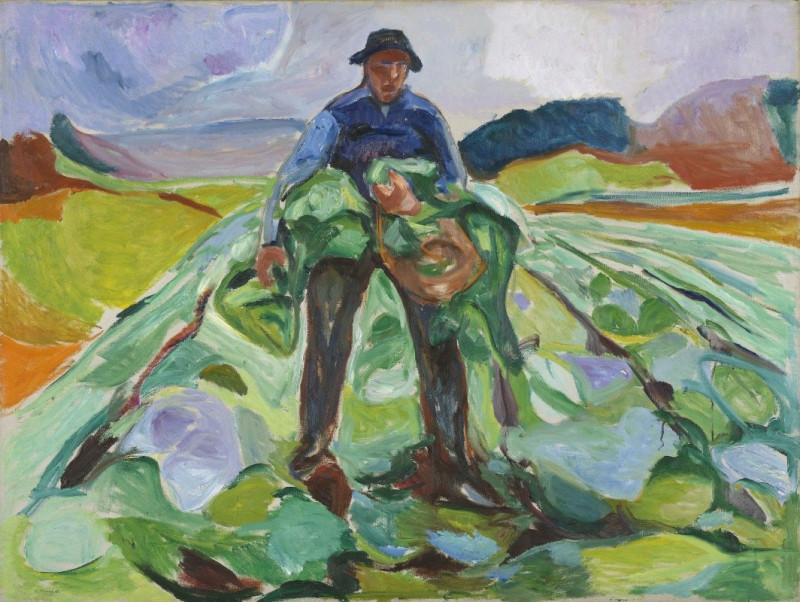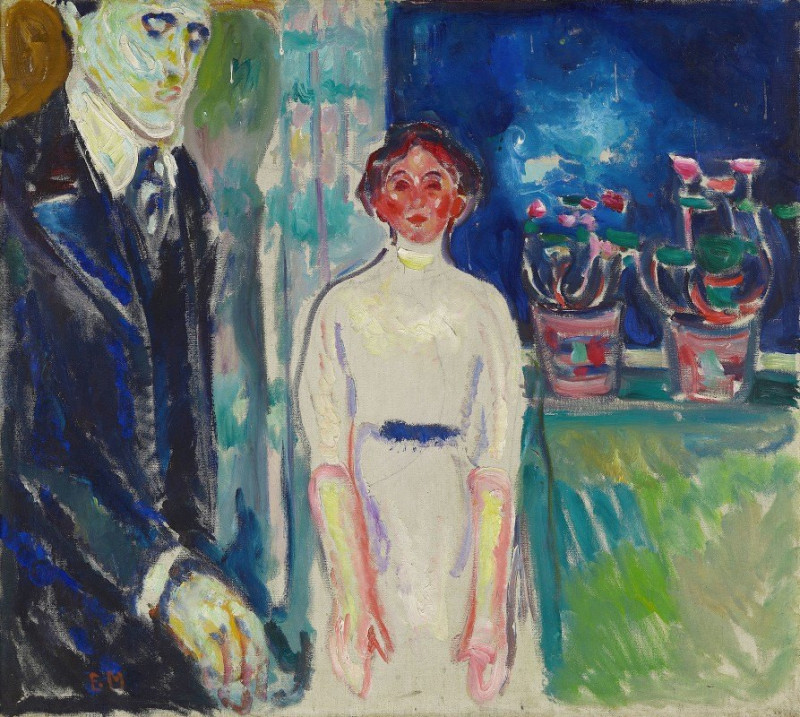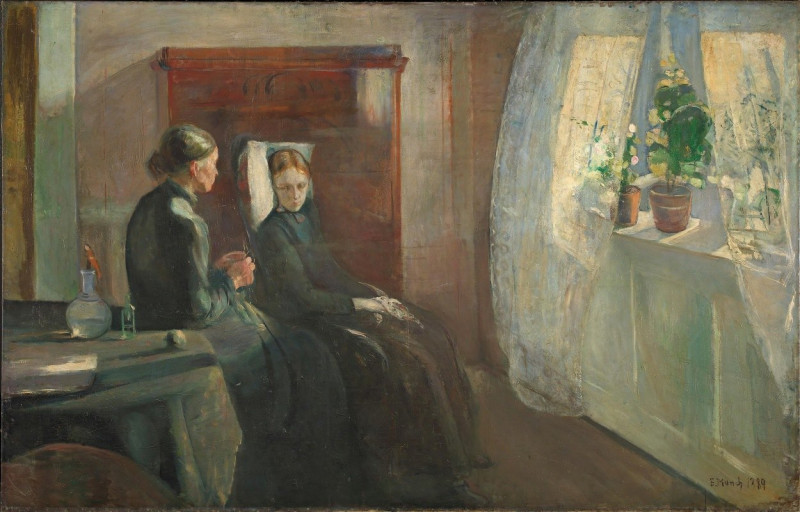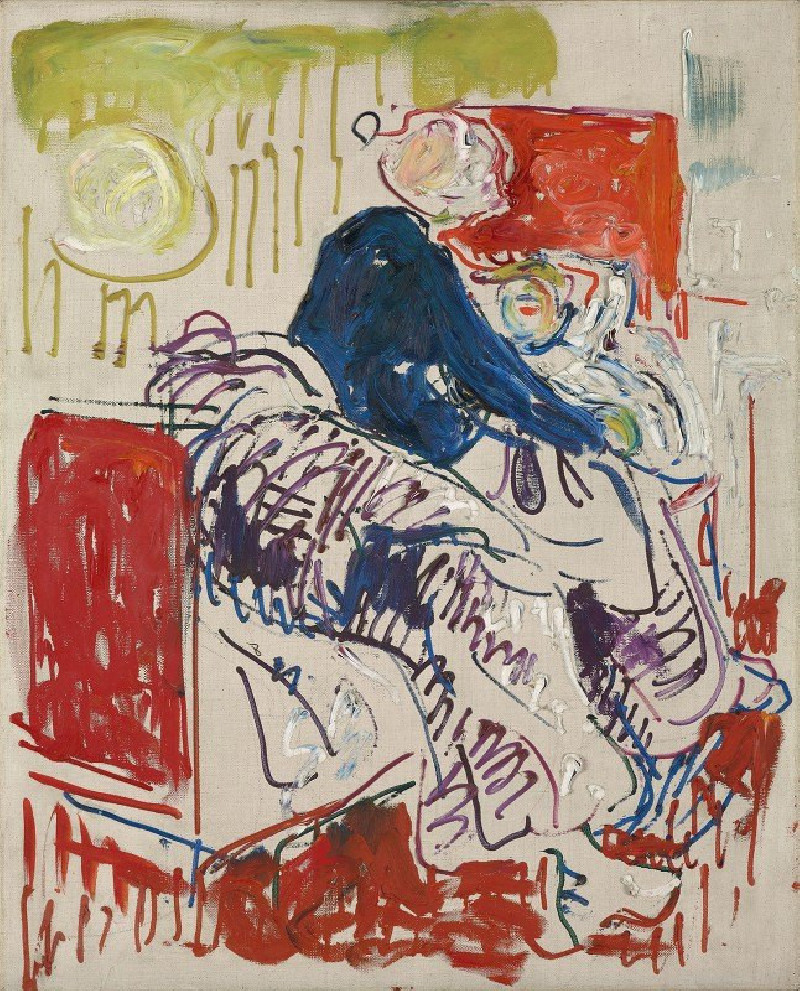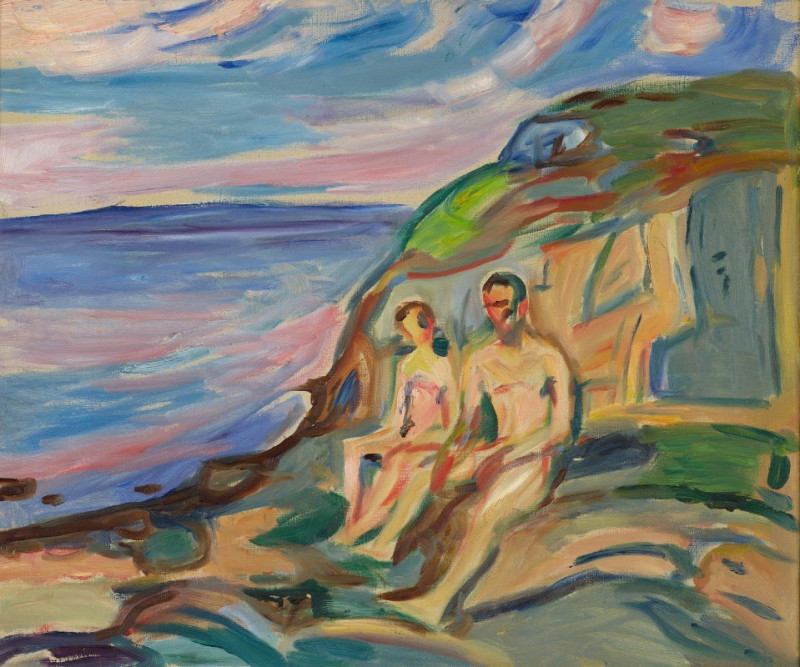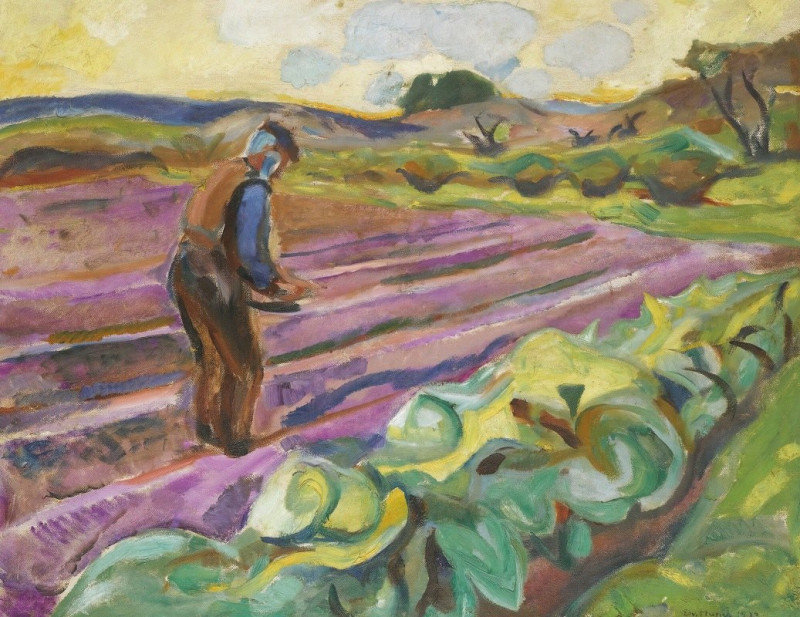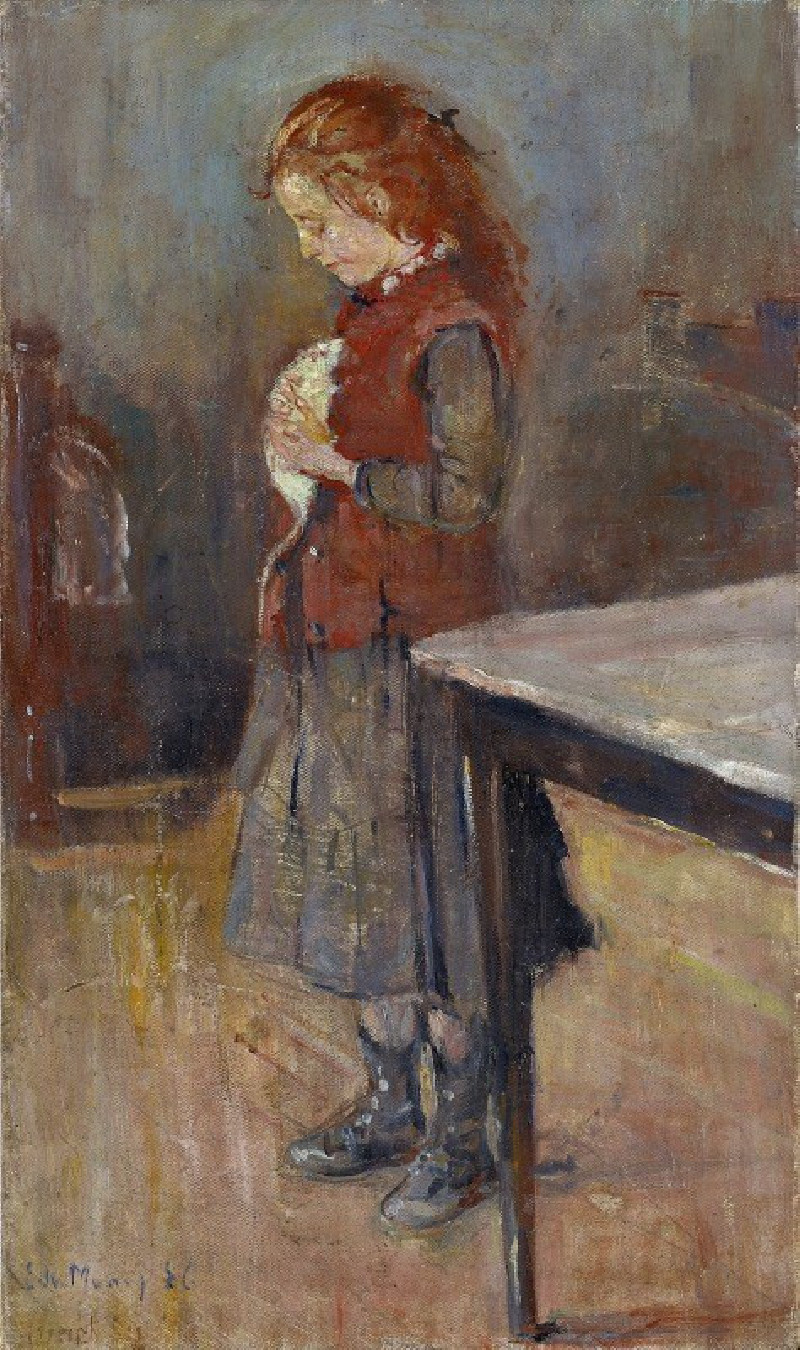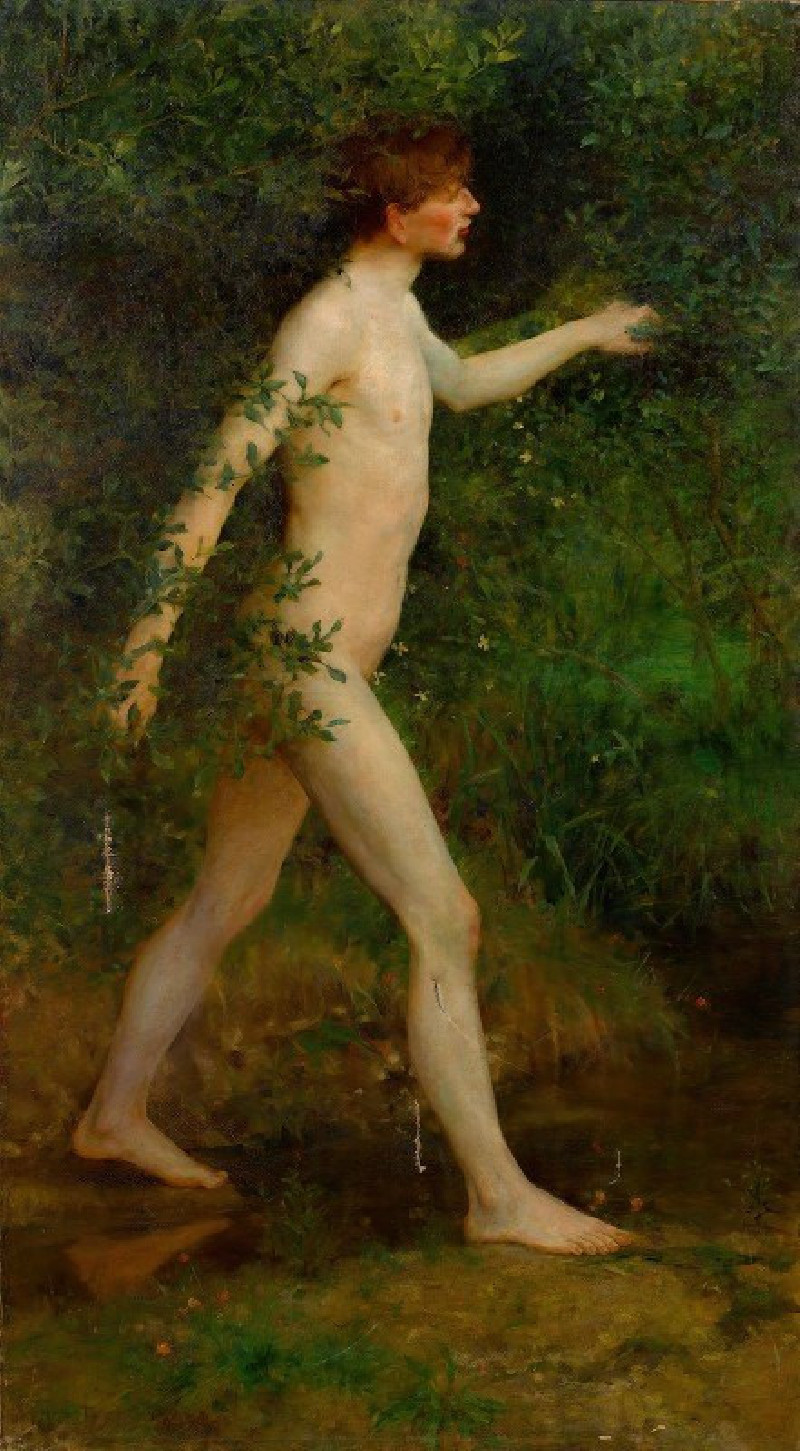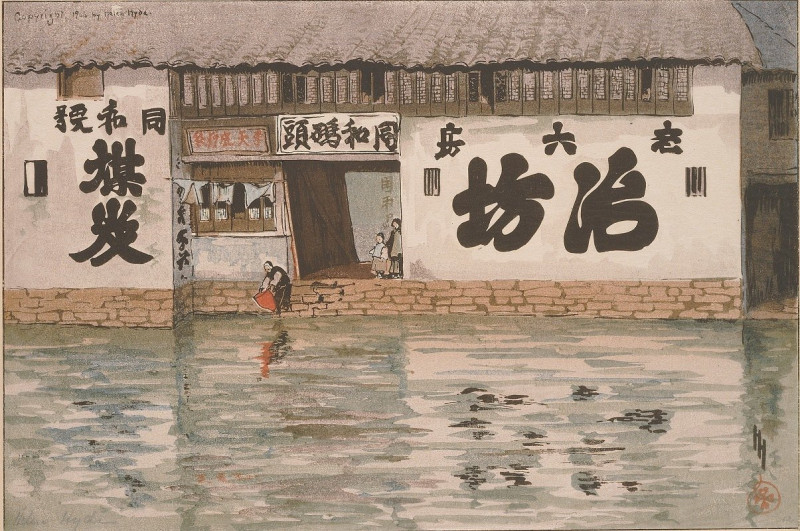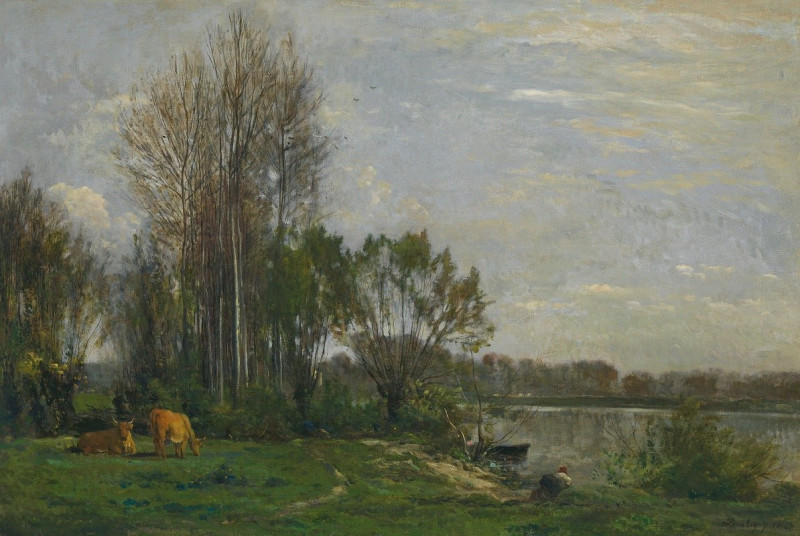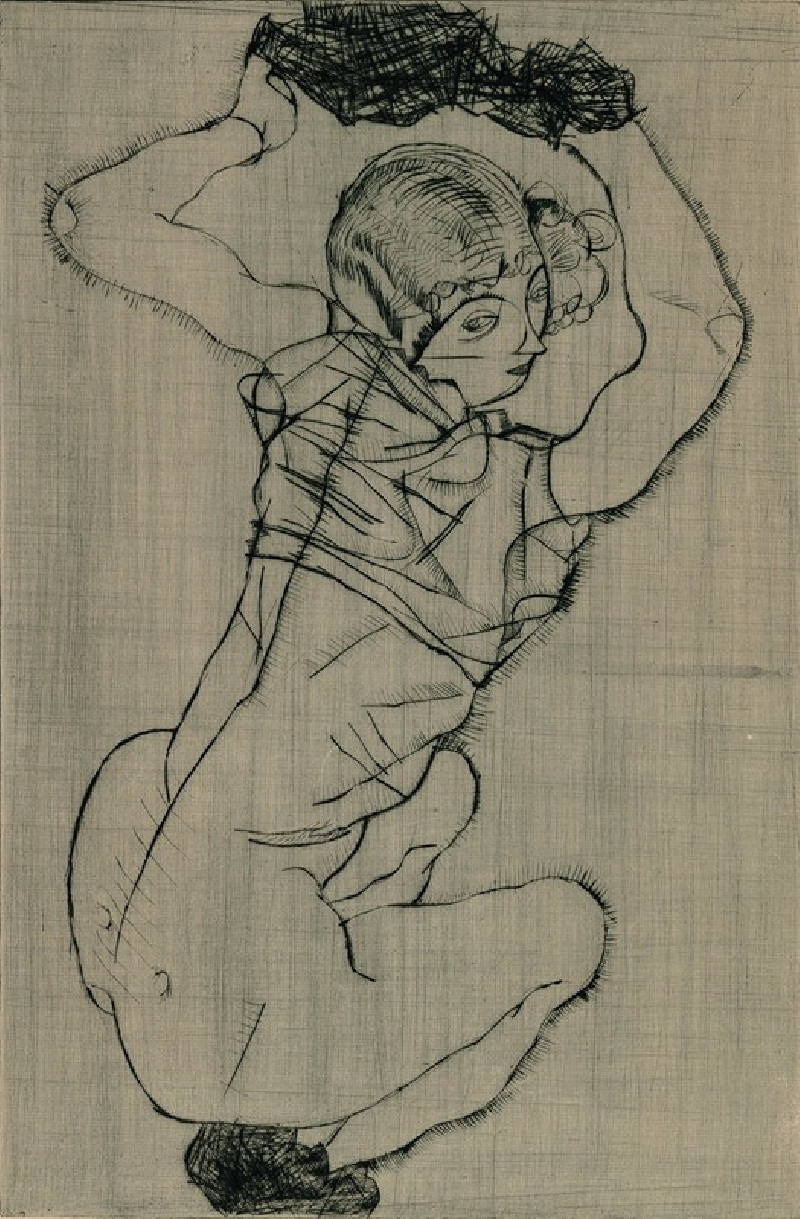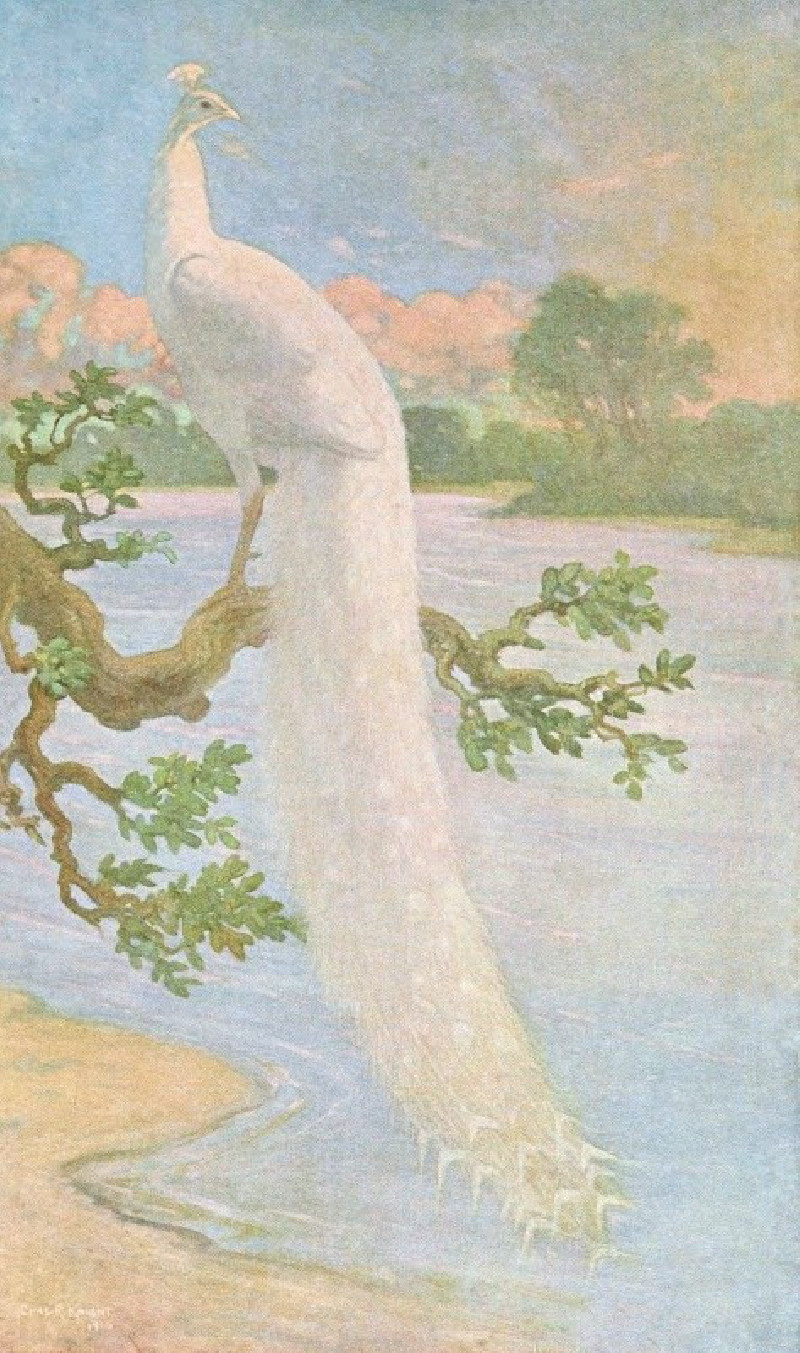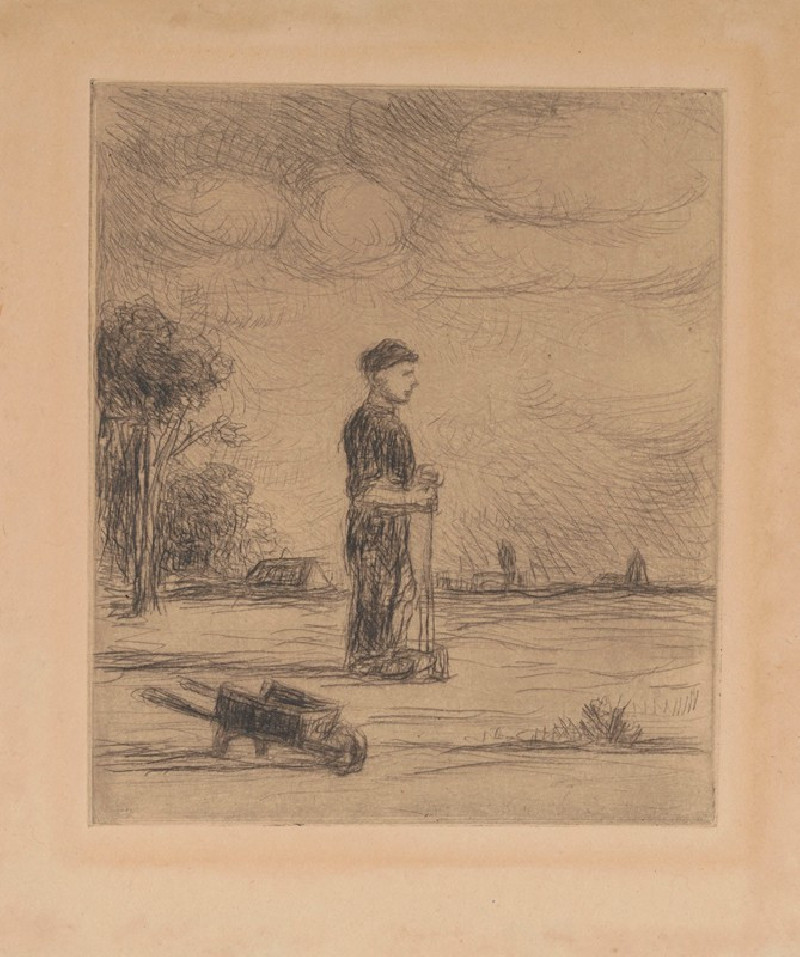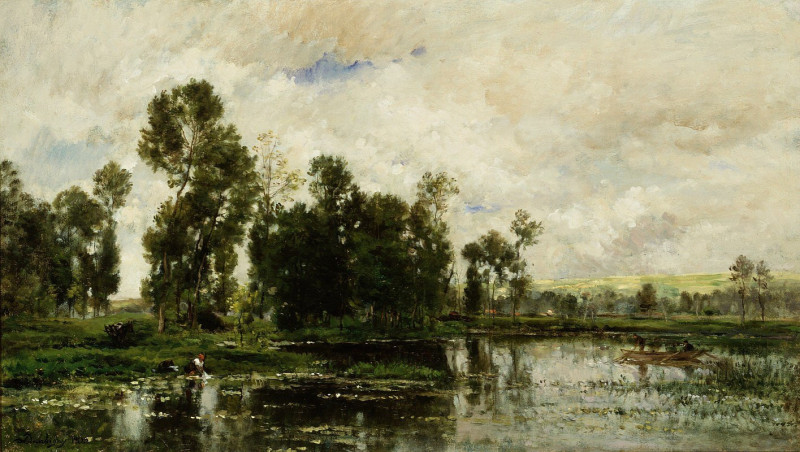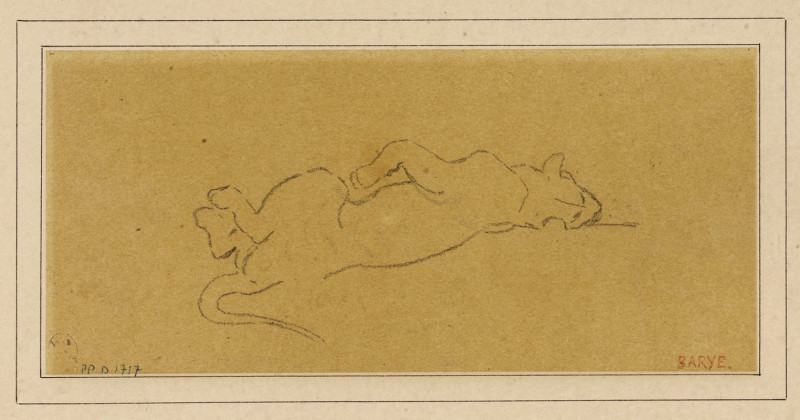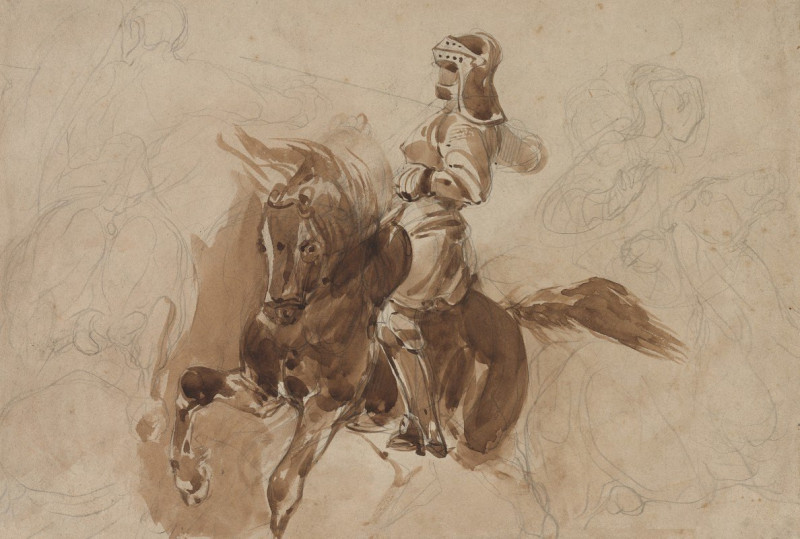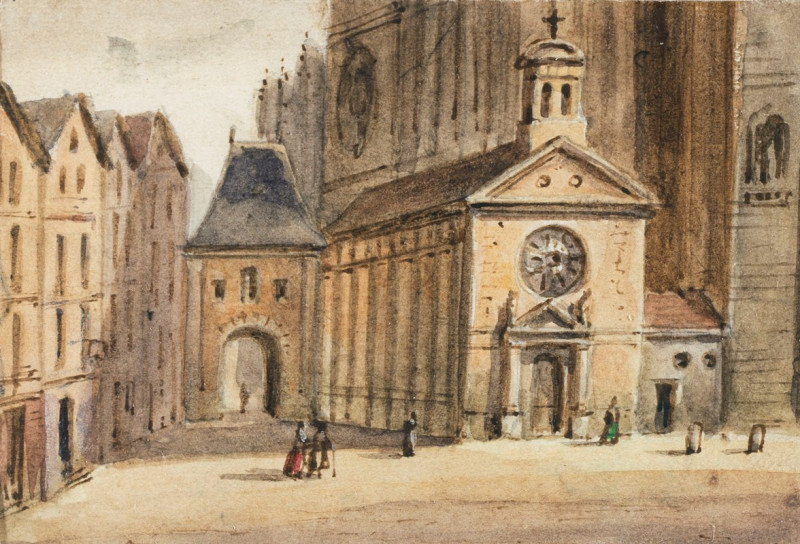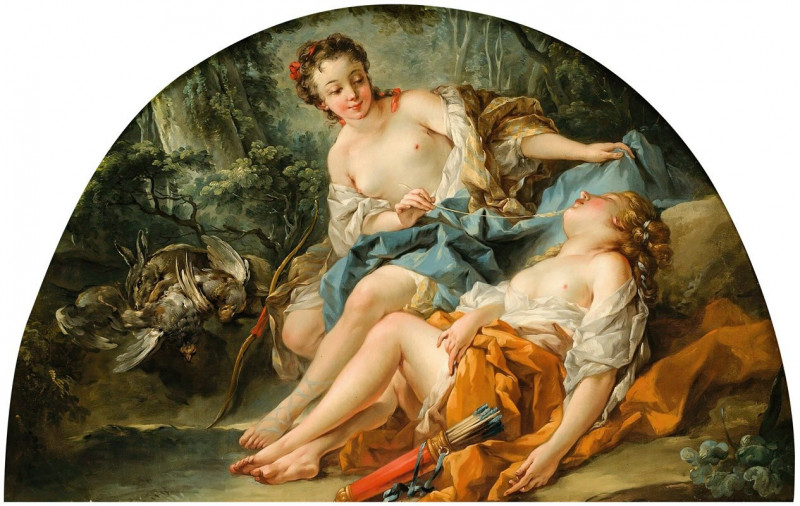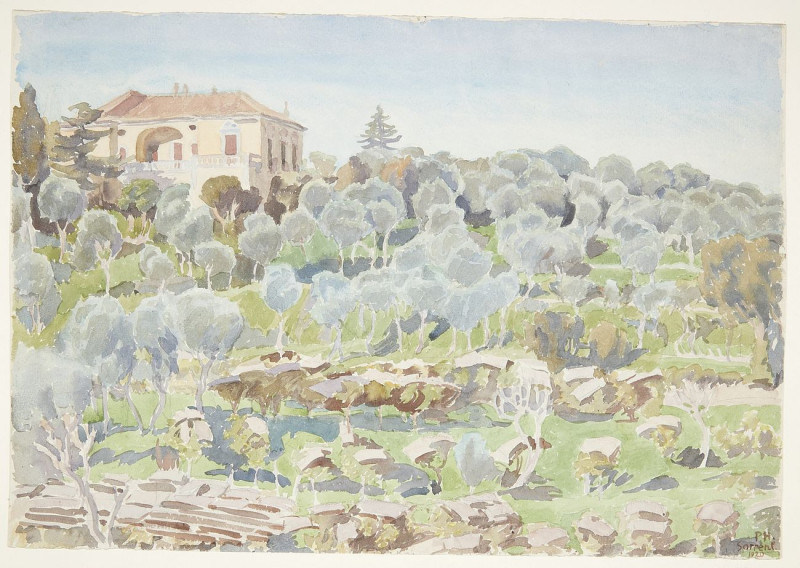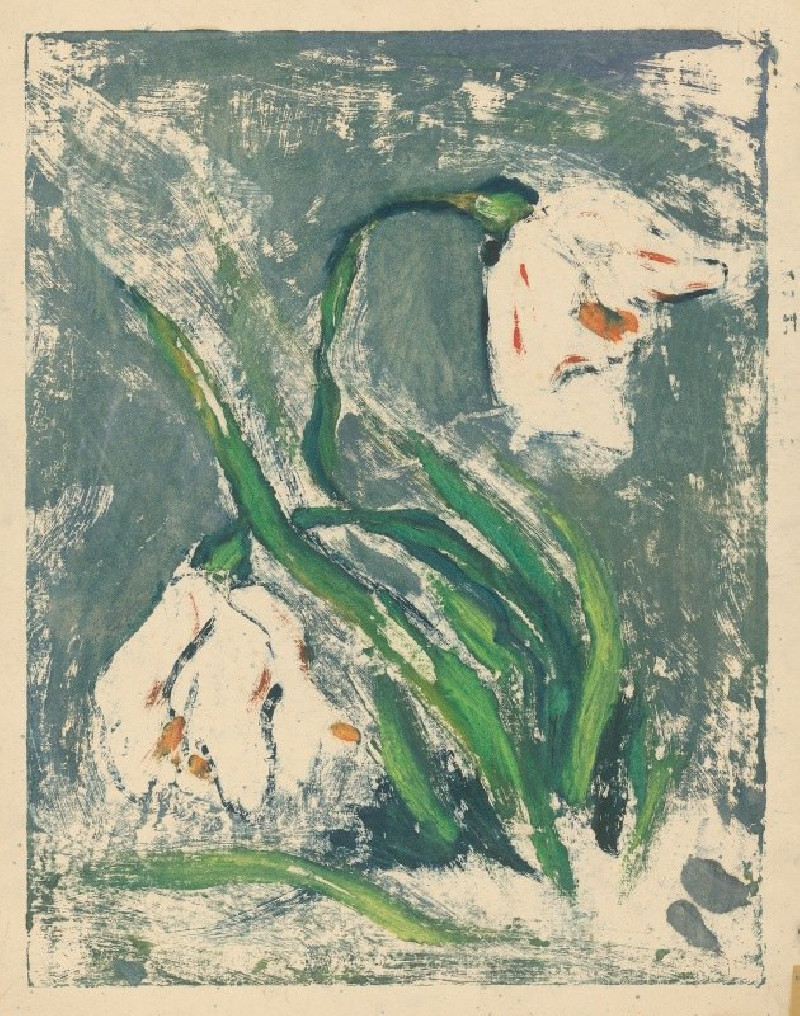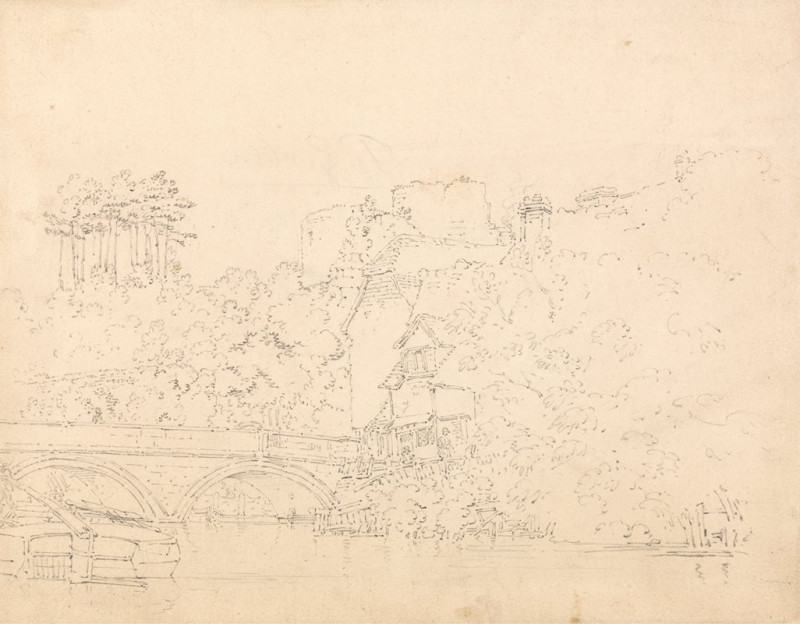Wilhelm Wartmann (1922)
Technique: Giclée quality print
Recommended by our customers
More about this artwork
The painting by Edvard Munch, titled "Wilhelm Wartmann," dated 1922, features a full-length portrait of a man in a suit standing confidently yet casually by a wooden railing. The subject, presumably Wilhelm Wartmann himself, is depicted with a subtle, soft expression on his face. He sports a modest beard and mustache, and his hair is neatly groomed.His attire is quite formal, dressed in a tailored blue suit with a lighter blue tie, suggesting a professional or a scholarly status. The background of the painting is vividly abstract, with swirls of green and dashes of darker colors that seem to float around, creating a lively contrast to the subject's calm and collected demeanor.Munch's style here is less intense than some of his more famous works, like "The Scream," but it still showcases his skill in blending colors and forms to convey mood and character. The brushwork is loose, with visible strokes that add a sense of movement to the painting, which enriches the overall composition with a dynamic, almost ethereal quality.The setting, though abstract, could be interpreted as a park or a garden, which aligns with the organic forms and the freshness of the color palette used in the background. This environment, paired with the genteel representation of Wilhelm Wartmann, crafts a narrative that might reflect the personality or status of Munch's subject, amid possibly introspective or serene surroundings.
Delivery
Returns
Edvard Munch (12 December 1863 – 23 January 1944) was a Norwegian painter. His best known work, The Scream (1893), has become one of Western art's most iconic images.
His childhood was overshadowed by illness, bereavement and the dread of inheriting a mental condition that ran in the family. Studying at the Royal School of Art and Design in Kristiania (today's Oslo), Munch began to live a bohemian life under the influence of the nihilist Hans Jæger, who urged him to paint his own emotional and psychological state ('soul painting'); from this emerged his distinctive style.

